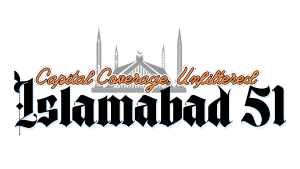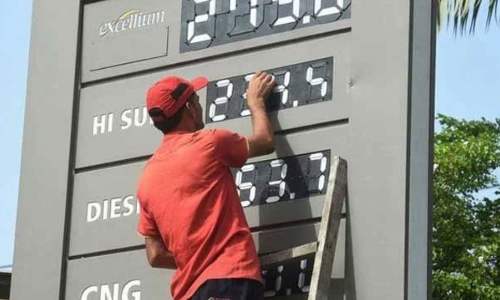ISLAMABAD: The interim federal government has taken a significant step by slashing petrol prices, reducing them by a substantial Rs40 per liter. This move comes as a welcome relief for the populace who have been grappling with the hardships of a challenging economic crisis since mid-2022.
As of October 16, the price of petrol has been revised from Rs323.38 per liter to Rs283.38 per liter. This reduction mirrors the fluctuations in global oil prices and the strengthening of the Pakistani rupee against the US dollar.
Petrol primarily finds its use in motorbikes and cars, serving as an alternative to compressed natural gas (CNG), particularly in Punjab, where local gas availability is lacking at CNG retail outlets.
CNG retail outlets in Punjab traditionally rely on liquefied natural gas (LNG), which, for the past couple of years, has faced scarcity due to Pakistan Petroleum Limited’s inability to import it.
Despite private sector attempts to import LNG since 2015, these efforts have been thwarted by gas utilities, seemingly to maintain their monopoly.
Additionally, the government has decided to decrease the price of high-speed diesel (HSD) by Rs15 per liter, reducing it from Rs318.18 to Rs303.18 per liter. HSD is predominantly used in the agriculture and transportation sectors, with this price cut expected to alleviate inflation to some degree.
Kerosene oil, in high demand during winter in remote areas, has seen its price reduced to Rs214.85 per liter, marking a Rs22.43 decrease per liter.
Kerosene oil is commonly used in stoves, particularly in remote regions, including the northern parts of the country, where the Pakistan Army is a significant consumer.
On the other hand, the government has increased the petroleum levy by Rs5 per liter on HSD, raising it from Rs50 to Rs55 per liter. A petroleum levy of Rs60 per liter is levied on petrol.
Nevertheless, it’s noteworthy that the government has waived the sales tax on these two petroleum products. Sales tax revenue is channeled to the provinces, while the petroleum levy revenue goes to the federal government. This move explains why the federal government eliminated the sales tax but continued to augment the petroleum levy.
Furthermore, a petroleum levy of Rs50 per liter is imposed on the high-octane blending component (HOBC), and Rs32.56 per liter on E-10 gasoline. E-10 gasoline, a biofuel composed of 90% regular unleaded and 10% ethanol, a natural byproduct of plant fermentation.
Some estimates suggest that the government garners approximately Rs75 billion in revenue from petroleum levy collections from oil consumers each month.
Sources indicate that prices of petroleum products on Platts, a price benchmark service for the oil industry, have experienced significant declines, while the Pakistani rupee has strengthened against the US dollar. Over the past two weeks, the Pakistani rupee has gained an average of Rs7.50 against the US dollar.
The average prices of petrol and HSD on Platts, which include various incidentals and duties, stand at Rs233.49 per liter and Rs305.93 per liter, respectively.
The Pakistan State Oil (PSO), responsible for importing petroleum products, has been granted an exchange loss adjustment of Rs0.74 per liter on petrol.
Moreover, the government has raised dealers’ margins by Rs0.41 per liter on petrol and diesel, increasing them from Rs7.82 to Rs8.23 per liter.
Oil marketing companies (OMCs) have also seen their margins rise by Rs0.33 per liter on petrol, increasing from Rs7.08 to Rs7.41 per liter, and by Rs0.47 per liter on HSD, going from Rs6.94 to Rs7.41 per liter.
(Islamabad51_Newsdesk)














